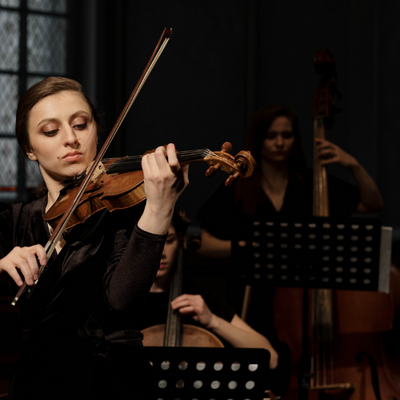
String instruments play a vital role in school music programs, offering students a unique opportunity to explore music, develop skills, and foster a deeper connection with the art form. Whether it's the violin, viola, cello, or double-bass, each instrument contributes to a richer learning experience, enhancing both engagement and overall educational outcomes.
Music education has long been recognised as essential for nurturing creativity, discipline, and collaboration. In schools, where students are often exposed to multiple disciplines, string instruments can be particularly effective in capturing their interest. The tactile nature of these instruments, combined with their expressive capabilities, provides a hands-on experience that promotes active learning.
String Instruments in Schools: A Gateway to Musical Exploration
Incorporating string instruments into school music programs offers students an introduction to a broad and varied world of sound. From orchestral settings to chamber music ensembles, students not only learn the technical aspects of their instrument but also develop an appreciation for music across different genres and cultures. Learning a string instrument requires dedication, but the rewards are significant. Students build patience and perseverance as they refine their technique over time, while also enjoying the immediate satisfaction of producing music.
For younger students, string instruments like violins and cellos offer an accessible way to begin their musical journey. Many schools include beginner-level ensembles or introductory courses that focus on the basics of playing and reading music. As students progress, these programs can grow in complexity, eventually involving performances that allow them to showcase their skills to their peers, families, and the broader community.
Enhancing Learning and Cognitive Development Through Music Education

Research consistently shows that music education has a positive impact on cognitive development. Playing string instruments requires coordination between both hands, concentration on pitch and rhythm, and an understanding of musical notation. These demands on the brain improve memory, enhance spatial-temporal skills, and support critical thinking. As students in school music programs practice their instrument and participate in ensemble rehearsals, they develop discipline and teamwork, key attributes that extend beyond the classroom.
Moreover, playing string instruments allows students to express emotions and ideas in ways that other subjects may not. The ability to convey feelings through music can be particularly beneficial for students who struggle with verbal communication, offering them an alternative outlet for self-expression.
Fostering a Lifelong Passion for Music

Introducing students to string instruments in schools often results in a lifelong appreciation for music. Many students go on to pursue music as a hobby, or even a profession, having discovered their love for performance in school ensembles or orchestras. For schools that are fortunate enough to offer such programs, the presence of string instruments serves not only as a key aspect of music education but also as a way to nurture well-rounded individuals who appreciate the arts.
In addition to individual benefits, string instruments can also foster a sense of community within the school. Group rehearsals, performances, and music festivals encourage collaboration and build relationships, both among students and with teachers. Music becomes a shared language that connects individuals and creates a sense of belonging.
Why Schools Should Invest in String Instrument Programs
Schools that invest in robust music programs featuring string instruments are investing in the holistic development of their students. These instruments offer a means of engagement that appeals to students of all ages, ensuring that music education remains a vital part of the curriculum. By providing access to quality instruments and instruction, schools can inspire a new generation of musicians who will carry their passion for music into the future.
For those responsible for school music departments, choosing the right string instruments and accessories is crucial. High-quality violins, violas, cellos, and double-basses ensure that students have the best tools for success, while reliable accessories such as instrument cases, rosins, and stands support both practice and performance.
Conclusion
In conclusion, string instruments in schools offer more than just music lessons—they provide a pathway to enhanced learning, cognitive development, and a sense of community. Schools that prioritise these programs will not only see the immediate benefits in student engagement but will also contribute to a well-rounded education that prepares students for success in multiple areas of life. Music education, particularly through the study of string instruments, remains an indispensable part of the school curriculum, shaping the minds and hearts of young learners.
For schools looking to enhance their music programs, we offer a wide range of high-quality string instruments, cases, and accessories. Reach out to us to equip your school with the best tools for success in string instrument education.














